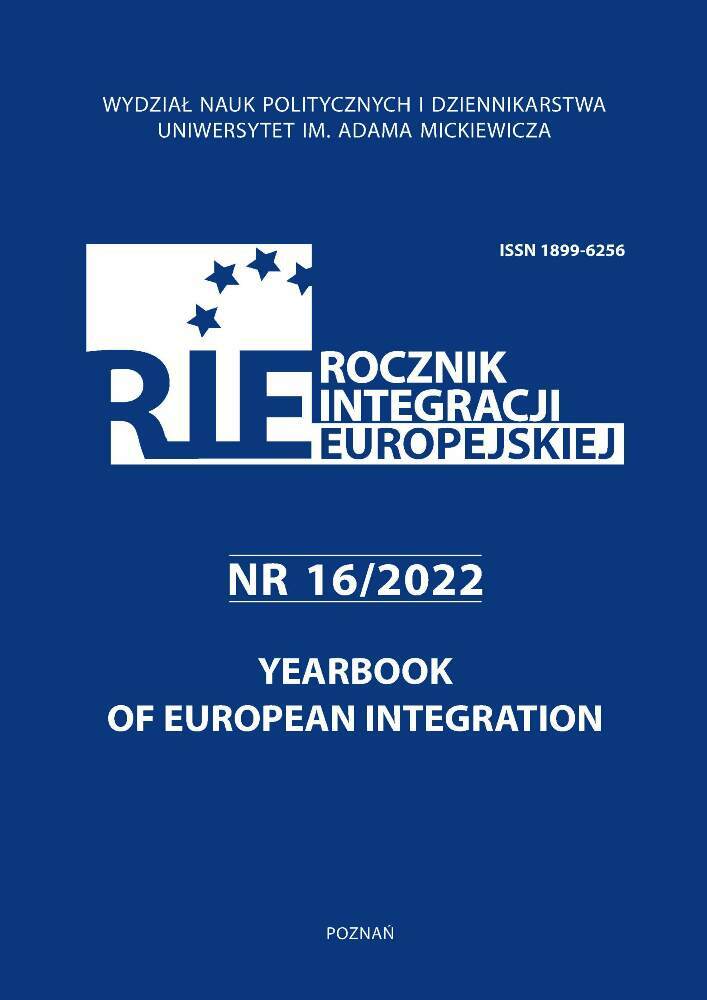Abstract
This article deals with one of the dimensions of the European Union’s raw materials policy, including rare earth elements (REE). The core and overarching goal of the raw materials policy implemented by a given entity is to ensure security in terms of raw materials. Taking into account the current geopolitical situation and the ongoing war in Ukraine, the main part of discussion regarding raw materials security focuses on issues related to the supply of energy sources, including gas or coal. Rare earth elements, however, remain on the side-lines of these considerations. Rare earth elements are the foundation of modern technological development in many areas and fields. Due to their role, they have been the object of political rivalry between the People’s Republic of China and the United States of America for at least twenty years. The question of the place and role of the European Union in this system remains open. The research intention of the considerations in this article is to indicate the role of REEs in the raw materials policy implemented by the European Union. The research shows that, despite the relatively late involvement of the European Union in the identification of key REEs and the development of their supply chain, a clear professionalisation of EU practices has been observed for several years. It is also indicated that among the most important challenges for the European Union’s raw materials policy are factors such as excessive dependence of the supply chain on the People’s Republic of China and difficulties in obtaining REEs within the territory of European Union member states.
References
Argusmedia (2019), Canada‘s Geomega to recycle rare earth magnets, 28.08.2019, https://www.argusmedia.com/en/news/1966820-canadas-geomega-to-recycle-rare-earth-magnets, 06.11.2022.
ERMA (2020), European Raw Materials Alliance – about us, https://erma.eu/about-us/, 03.11.2022.
European Raw Materials Alliance (2021), Rare Earth Magnets and Motors: A European Call For Action. A report by the Rare Earth Magnets and Motors Cluster of the European Raw Materials Alliance, Berlin.
Galos K., Szamałek K. (2011), Ocena bezpieczeństwa surowcowego Polski w zakresie surowców nieenergetycznych, „Zeszyty Naukowe Instytutu Gospodarki Surowcami Mineralnymi i Energią Polskiej Akademii Nauk”, nr 81.
Jha A. R. (2014), Rare Earth Materials. Properties and Applications, CRC Press, Boca Raton. DOI: https://doi.org/10.1201/b17045
Stewart J. E. (2018), Optical Principles and Technology for Engineers, CRC Press, Boca Raton. DOI: https://doi.org/10.1201/9781315214290
Komunikat Komisji Europejskiej (2008), Inicjatywa na rzecz surowców – zaspokajanie naszych kluczowych potrzeb w celu stymulowania wzrostu i tworzenia miejsc pracy w Europie, Bruksela.
Komunikat Komisji Europejskiej (2020), Odporność w zakresie surowców krytycznych: wytyczanie drogi do większego bezpieczeństwa i bardziej zrównoważonego rozwoju, Bruksela.
Morin-Crini N., Lichtfouse E., Crini G. (2021), Emerging Contaminants. Occurrence and Impact, Springer Nature, Cham. DOI: https://doi.org/10.1007/978-3-030-69079-3
Ostant W. (2014), Bilans bezpieczeństwa energetycznego Polski w kontekście rządowych planów budowy siłowni jądrowej, in: Bezpieczeństwo energetyczne. Rynki surowców i energii. Teraźniejszość i przyszłość, t. 1: Polityka – gospodarka – zasoby naturalne i logistyka, red. P. Kwiatkiewicz, Fundacja na rzecz Czystej Energii, Poznań.
Radwanek-Bąk B., Galos K., Nieć M. (2018), Surowce kluczowe, strategiczne i krytyczne dla polskiej gospodarki, „Przegląd Geologiczny”, vol. 66, no. 3.
Spedding F. H. (1951), The Rare Earths, „Scientific American”, vol. 185, no. 5.
Szucs A. (2022), EU cannot become as dependent on Chinese rare earth elements as on Russian energy: EU’s von der Leyen, 10.10.2022, https://www.aa.com.tr/en/europe/eu-cannot-become-as-dependent-on-chinese-rare-earth-elements-as-on-russian-energy-eu-s-von-der-leyen/2707611, 07.11.2022.
The Congress of the United States (1977), U.S. Raw Materials Policy: Problems and Possible Solutions, U.S. Government Printing Office, Washington D.C.
Zamęcki Ł. (2011), Znacznie i wymiary bezpieczeństwa państwa w zakresie surowców nieenergetycznych, „Zeszyty Naukowe WSOWL”, no. 3(161).
License
Copyright (c) 2022 Rafał Kamprowski

This work is licensed under a Creative Commons Attribution 4.0 International License.

